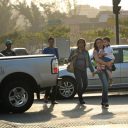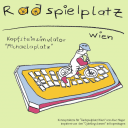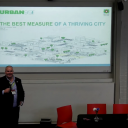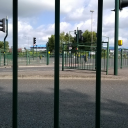


Why US cities are becoming more dangerous for cyclists and pedestrians
As cities strive to improve the quality of life for their residents, many are working to promote walking and biking. Such policies make sense, since they can, in the long run, lead to less traffic,...Read more
New mobility is coming to a city near you – will it be sustainable?
To harness the benefits of new mobility, decision-makers should establish clear guidelines that prioritize safe, efficient and equitable transportation for all. More than 300 new bike-share services were launched worldwide last year. Ride-hailing services such as Uber and Didi Chuxing...Read more
Why we need a summit on youth urban road safety
Our cities are rapidly expanding, and with them motorization is increasing at an unchecked pace. Unless the global community takes meaningful strides to address the impact of these trends on the most vulnerable in our...Read more
Paris plans free public transport for children
The mayor of Paris, Anne Hidalgo has proposed that children ages 4 to 11 should be able to use public transport for free. At this time only children under the age of 4 travel for...Read more
5 Cities show what urban transformation really looks like
Urbanization is changing the face of the planet – for better and for worse. City populations, GDP and investment are increasing exponentially. At the same time, carbon emissions are rising, more and more people are living in...Read more
Why Does Universal Street Design Matter?
Accessibility remains a challenge for Belo Horizonte’s bus rapid transit corridor. Improving public transit requires a hard look not just at vehicles and routes but at how people get on and off them. Too often, design...Read more
3 Reasons Raahgiri has become India’s urban movement
Raahgiri Day is India’s first sustained car‐free event. It started as a small initiative and has since blossomed into a national movement. Now, it celebrates its fifth birthday. In too many cities today we see a...Read more
A good community where young children can thrive
The international research is clear. Stimulating and positive environments early in life provide optimal foundations for children’s ongoing development into adulthood. This in turn makes a difference to the productivity of society at large. Communities are...Read more
Six road design changes that can save lives
Urbanisation is by and large a good thing, corresponding with steady declines in extreme poverty. More compact cities may also hold the key to a sustainable future. But this trend has come with a side effect: more...Read more
Implementing child-friendly policies in Latin American cities
Irene Quintáns is a force to be reckoned with. She is on a crusade helping cities across Latin America implement child-friendly policies. Aside from her passion, a key part of her success is her ability to...Read more
The reconquest of the public space
The Austrian model of the so-called “Wohnstrasse“ (residential street) – a street intended as a social meeting point as well as a counter-project to the increasing urban motorisation in the cities has been existing for...Read more
A bicycle playground for Vienna
How can we foster the autonomous mobility and cycling skills of children living in the city and promote physical activity? How can we facilitate a safe but exciting approach to cycling for urban kids? Cycling will...Read more
The first thousand days of a child’s life determines ‘surviving or thriving’
Research shows that the brain develops the most in the first thousand days of a child’s life. Alarmingly some funders and researchers are not paying attention to this critical age group. During the Child in...Read more
New London Plan aims for more play and mobility for children
The draft of the new London Plan, the long-term spatial development strategy for the UK capital, published yesterday for public consultation, includes a revised policy for children’s play and informal recreation. Adrian Voce reports. The new...Read more

